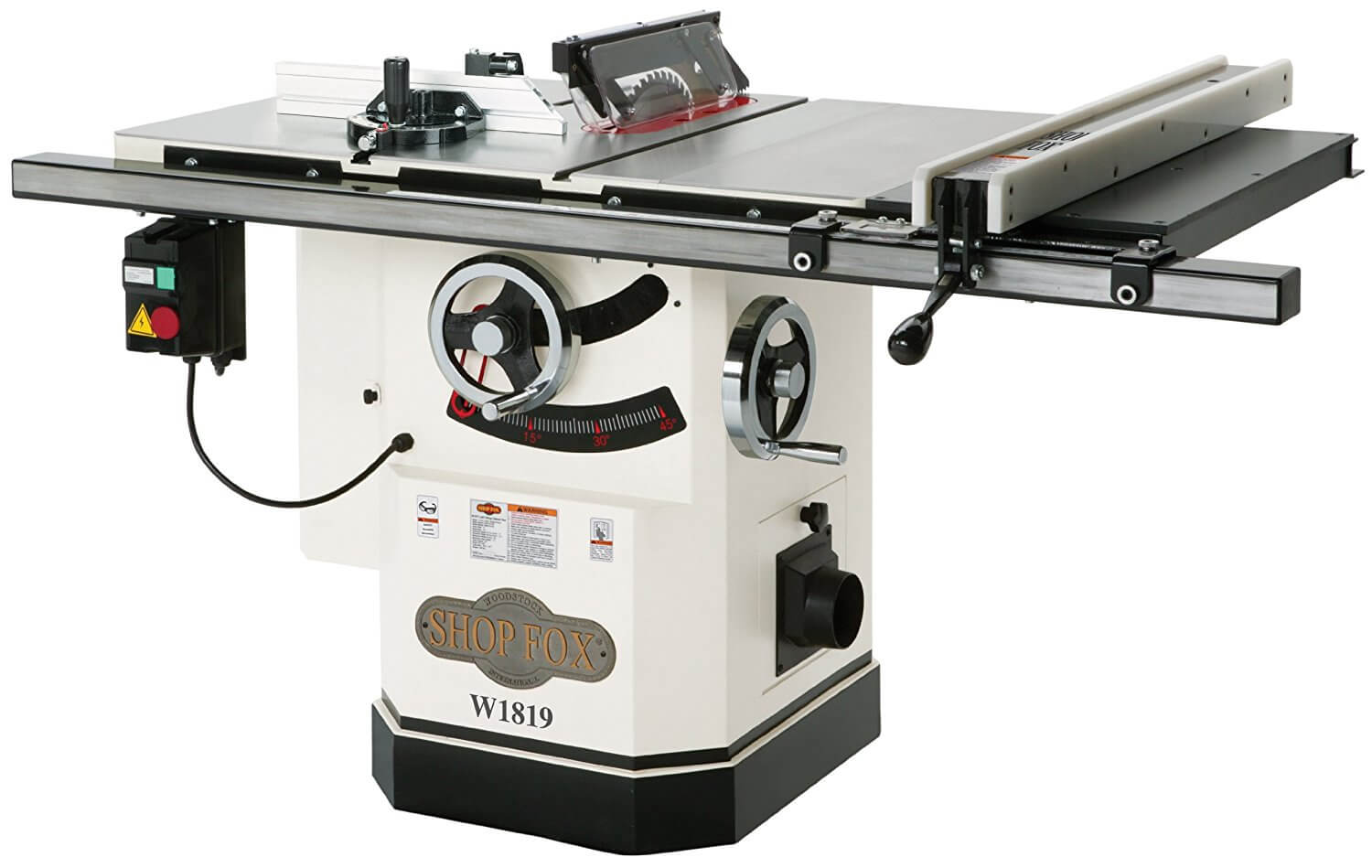Top 3 Cabinet Saw Features for Small Shops

Choosing the right cabinet saw for a small shop requires careful consideration of several key features. Space is at a premium, so every element needs to justify its footprint and contribute to efficient workflow. This means prioritizing features that maximize accuracy, minimize cleanup, and provide sufficient power without overwhelming the space.
Cabinet Saw Feature Comparison for Small Shops
The following table compares three essential features of a cabinet saw, highlighting their importance in a small shop environment.
| Feature | Importance in Small Shop | Typical Range of Values | Considerations for Space |
|---|---|---|---|
| Fence Accuracy | Crucial for precise cuts, reducing material waste and rework in a limited space where storage is minimal. Inaccurate cuts mean more material needed, leading to increased costs and storage issues. | ±0.001″ to ±0.005″ (or better) | A robust, well-designed fence system is essential, even if it means a slightly larger footprint. Consider a fence with micro-adjustments for ultimate precision. Avoid flimsy fences that will drift out of alignment. |
| Dust Collection | Extremely important in a small shop to maintain a clean and safe working environment. Excessive dust can lead to health problems and hinder visibility. Effective dust collection also improves the longevity of the saw and its components. | Integrated dust port with varying CFM ratings; compatibility with shop vacs or central dust collection systems. | A larger dust collection hood might be necessary for effective dust extraction, potentially impacting the saw’s overall dimensions. Consider a system that minimizes the need for additional equipment. |
| Motor Power | Sufficient power is needed for smooth cuts through various materials, preventing stalling and burning. However, excessively powerful motors are unnecessary and may add to the saw’s overall size and weight. | 1.5 HP to 3 HP (or more for heavy-duty use) | Balance power needs with the size and weight of the motor. A smaller, more efficient motor might be sufficient for many small shop tasks, reducing the overall footprint of the saw. |
Visual Representation of Feature Impact on Workflow
Imagine a simple diagram depicting three separate workflows in a small shop. Each workflow represents a different level of efficiency related to the three features.
Workflow 1 (Poor Fence Accuracy): This workflow shows a cluttered workspace with multiple pieces of scrap wood scattered around the saw. The saw itself is depicted with a visibly inaccurate fence, resulting in multiple off-cut pieces requiring additional cuts and time. The visual would emphasize the wasted material and increased time spent cleaning up the mess.
Workflow 2 (Poor Dust Collection): This workflow depicts a saw surrounded by a visible cloud of sawdust. The worker is shown partially obscured by the dust, highlighting visibility issues and potential health hazards. The tools and workspace are also covered in dust, emphasizing the cleaning effort required.
Workflow 3 (Optimal Features): This workflow depicts a clean and organized workspace. The saw has a precise fence, resulting in clean, accurate cuts with minimal waste. The dust collection system is effectively removing sawdust, keeping the air clean and the workspace tidy. The worker is shown working efficiently and safely. The visual contrast between these three workflows clearly illustrates the impact of each feature on overall workflow efficiency.
Trade-offs and Cost Implications
There are inherent trade-offs between these three features. A saw with exceptional fence accuracy might be more expensive and require more space. Similarly, a high-performance dust collection system will usually add to the cost and possibly the size of the saw. A more powerful motor, while beneficial for certain applications, can increase both cost and weight.
For a budget-conscious small shop owner, it’s crucial to prioritize. For example, a higher quality fence is generally a better investment than an extremely powerful motor for many common small-shop tasks. Similarly, focusing on a saw with good integrated dust collection can significantly improve the overall working environment without the expense of an external dust collection system. Consider the types of projects you’ll be undertaking and balance the features accordingly. For instance, a woodworker specializing in fine furniture will likely prioritize fence accuracy above raw motor power, while a cabinetmaker might place more emphasis on motor power for cutting thicker stock.
Best Cabinet Saw Brands and Models for Small Shops: Best Cabinet Saw For Small Shop

Choosing the right cabinet saw for a small shop requires careful consideration of space, budget, and woodworking needs. You need a machine that’s powerful enough for serious projects but compact enough to not dominate your workspace. This section dives into three leading brands and specific models that excel in this environment.
Leading Cabinet Saw Brands for Small Shops, Best cabinet saw for small shop
Three brands consistently stand out for their quality, features, and suitability for smaller workshops: Grizzly, Powermatic, and SawStop. Grizzly offers a strong value proposition, balancing performance and affordability. Powermatic focuses on robust construction and precision, appealing to serious woodworkers. SawStop prioritizes safety with its innovative blade-braking technology, a significant advantage in any shop. These brands cater to a range of woodworking enthusiasts, from hobbyists to professionals, with models that fit various budgets and shop sizes.
Specific Cabinet Saw Models for Small Shops
Selecting the right model within these brands is key. Here are three examples, each offering a compelling combination of features and practicality for small shops:
- Grizzly G0771Z Cabinet Saw:
- Key Specifications: 3 HP motor, 52″ rip capacity, cast iron table, riving knife, and a relatively compact footprint.
- Price Range: $1,500 – $2,000 (prices fluctuate)
- User Reviews: Generally positive, praising its power, accuracy, and value for money. Some users mention minor assembly challenges and the need for occasional adjustments. Many appreciate its ability to handle a wide range of woodworking tasks in a smaller space.
- Powermatic PM66 Cabinet Saw:
- Key Specifications: 3 HP motor, 50″ rip capacity, heavy-duty cast iron construction, precision-ground table, and numerous safety features.
- Price Range: $3,500 – $4,500 (prices fluctuate)
- User Reviews: Highly regarded for its build quality, smooth operation, and accuracy. Users highlight the machine’s longevity and ability to withstand heavy use. The higher price point is often justified by its superior performance and reliability. However, some find it quite heavy and may need assistance with moving it.
- SawStop PCS3123 Cabinet Saw:
- Key Specifications: 3 HP motor, 52″ rip capacity, cast iron table, SawStop safety system, and a well-designed fence system.
- Price Range: $4,000 – $5,000 (prices fluctuate)
- User Reviews: The SawStop safety system is the standout feature, providing unparalleled protection. Users appreciate the precision and power, though the price is a significant factor. Some find the safety system adds to the overall cost and complexity, but most agree that the safety benefits outweigh these drawbacks. The footprint is slightly larger compared to other options in this list.
Rewritten Article: Best Cabinet Saws for Small Shops
For a small shop, your cabinet saw is a major investment—it needs to be powerful, accurate, and, crucially, space-efficient. You can’t afford a lumber-gulping behemoth that dominates your workspace. The ideal saw balances performance with a footprint that fits comfortably.
Consider Grizzly for value, Powermatic for robust build quality, and SawStop for its unparalleled safety features. Each offers models suitable for small shops, but research is key. Check user reviews, compare specifications (motor power, rip capacity, table size), and factor in your budget. A larger motor might seem appealing, but a smaller, well-built saw may be more suitable for limited space. Don’t underestimate the importance of a smooth-running fence and a sturdy table; these directly impact accuracy and ease of use. Ultimately, the best cabinet saw is the one that best suits your needs, space, and budget.
